#82nd airborne
Explore tagged Tumblr posts
Text

Three members of the WWII Airborne Demonstration Team display the typical loadout of gear worn by US Paratroopers of the 82nd and 101st Airborne Divisions on D-Day.
The WWII ADT was one of several groups of airborne re-enactors that jumped in period-correct uniforms and gear, with authentic military canopy parachutes, from a fleet of C-47 ‘Dakotas’ onto original D-Day drop zones during the 75th anniversary of D-Day on June 6, 2019.
(Photo by: Gary Daniels)
#dday#normandy#world war 2#wwii#us army#airborne#reenactment#miltary#history#operation overlord#101st airborne#82nd airborne
380 notes
·
View notes
Text

JUNE 6, 1944: Members of the 82nd Airborne Division, 508th Regiment, check their equipment before taking off from an airfield in Saltby, England. source
#world war 2#82nd airborne#this has been in my drafts for so long. personal project research moment#hist#wwii
97 notes
·
View notes
Text

“I am the 82 Airborne and this is as far as the bastards are going to get”…….On December 17, 1944 units of the 82nd Airborne were deployed to stop the surprise German counter attack which became known as “The Battle of the Bulge”. Taking advantage of the winter weather and targeting a weakness in the American lines, German forces smashed through and were on the verge of routing American forces and rolling back hard fought allied gains when the 101st and 82nd along with other tested units joined the fray, first slowing, then stopping the advance. When I was younger I knew people who were with the 82nd and 101st and fought in this battle. Thank you.
#airborne#82nd airborne#world war 2#battle of the bulge#ardennes#St.Vith#paratroopers#us army#winter soldiers#military
20 notes
·
View notes
Text
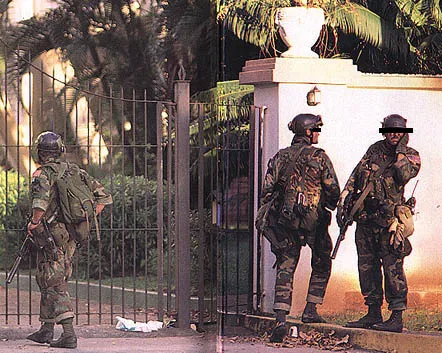
Delta Force during operations in Panama, 1989
#Delta Force#cag#the unit#ace#the boys at bragg#Panama#1989#fort bragg#u.s. army#special forces#75th ranger regiment#82nd airborne#101st airborne
14 notes
·
View notes
Text

General James M. Gavin
12 notes
·
View notes
Text
U.S. Airborne & Special Operations Museum!!!
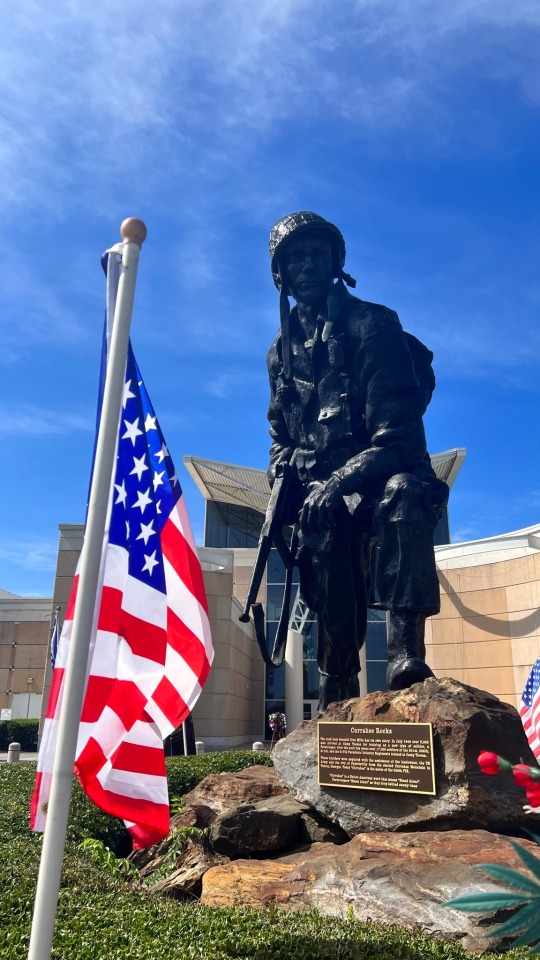
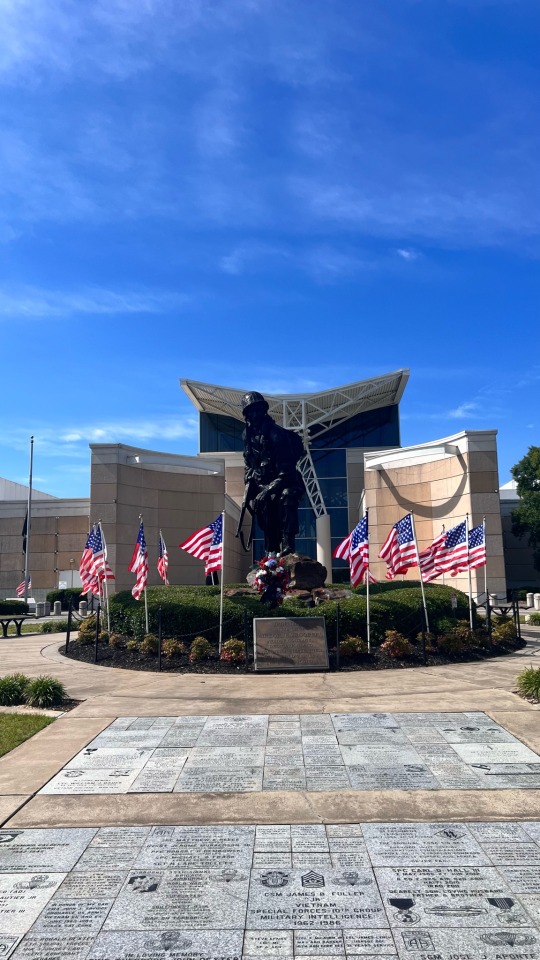
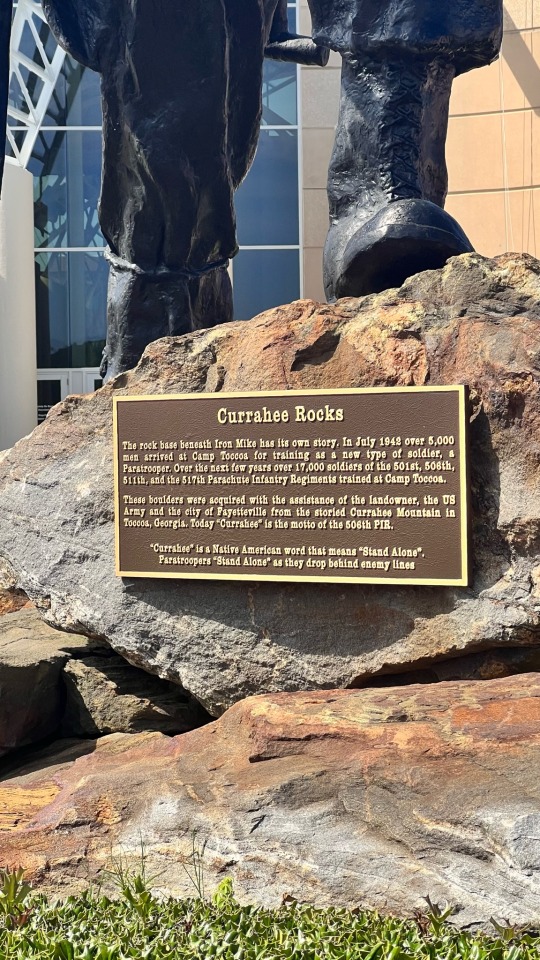


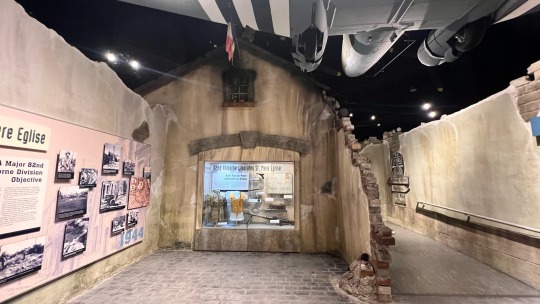

My dad and I took a day trip to the Airborne & Special Operations Museum in Fayetteville, NC!! It was beyond amazing and I highly recommend visiting it!! I loved learning more about the 101st and 82nd Airborne. I also nerded out the whole time, rambling about different BoB things to my dad, who listened to all of them lol!!
100/10!!!
#band of brothers#easy company#101st airborne#101st airborne division#82nd airborne#ww2 history#history#mads' fandoms
87 notes
·
View notes
Text
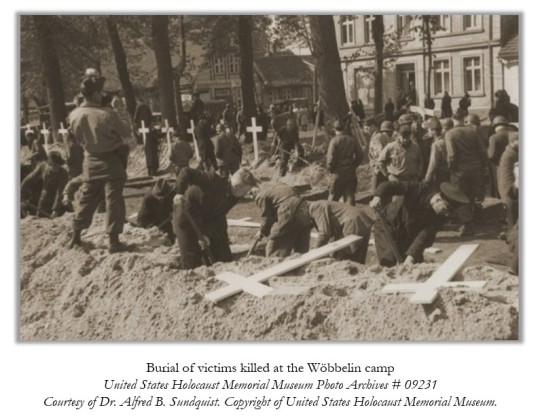
This Day in History: 82nd Airborne Division rescues Nazi prisoners
On this day in 1945, the 82nd Airborne Division liberates a concentration camp just outside Ludwigslust, Germany. The Wöbbelin camp hadn’t been in operation for too long: It was established in February 1945 as the Nazis sought to move prisoners away from the Allied advance.
Even at this late stage of the war, the Nazis did not want those prisoners rescued.
At this point in the war, of course, the writing was on the wall. Adolf Hitler had committed suicide mere days earlier, and an Allied victory was just around the corner. Allied forces were discovering and liberating thousands upon thousands of Hitler’s prisoners.
The story continues here: https://www.taraross.com/post/tdih-82nd-airborne-liberation
#tdih#otd#this day in history#history#history blog#World War II#USArmy#82nd airborne#sharethehistory
13 notes
·
View notes
Text
Easy Company

#band of brothers#BOB#WW2#US Army#Parstrooper#Parachute Infantry#Modern War#82nd airborne#101st airborne#easy company
48 notes
·
View notes
Text
So. About that time my Dad claimed Grenada for Atlantia.
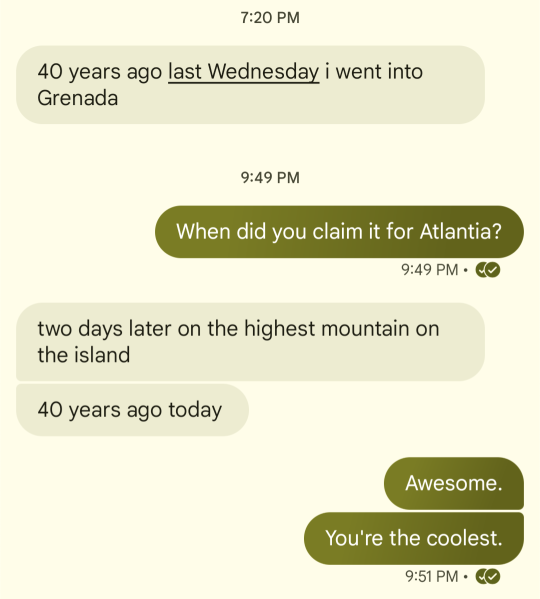
The Canton presented it to the Crown at 12th Night as a gift.
16 notes
·
View notes
Text
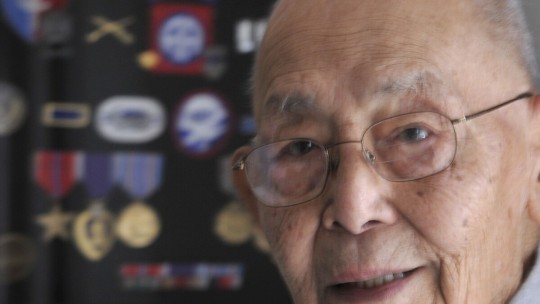
Captain Wesley Ko in front of his decorations for service with the 82nd Airborne Division during WW II. (Photograph courtesy of the Cape Cod Times).
Airborne Chinese American Warfighters on D-Day
On the occasion of the June 6 allied landings at Normandy in 1944, and every National Airborne Day on August 16, we honor three Chinese American veterans of the Second World War.
Glider Infantryman Wesley Ko
Wesley Ko served as a Captain in the 325th Glider Infantry of the 82nd Airborne Division in the European Theater (ETO), earning the Silver Star and numerous other medals including the Purple Heart.
Initially aspiring to be a pilot with the Flying Tigers, Wesley was working in a print shop in Philadelphia when the U.S. entered the war. Despite his employer offering him a draft deferment, he chose to enlist to join his friends. After completing officer candidate school at Fort Benning, Georgia, and overcoming initial delays in assignment possibly due to his Asian ancestry, he joined the 82nd Airborne and subsequently the 325th Glider Infantry Regiment.
During his thirty months of service, Ko fought in six major campaigns including action in Sicily, Naples, Normandy (the day after D-Day), the Battle of the Bulge, the Allied assault on the Siegfried Line, and the battle for Cologne. He was also present at the liberation of the Wöbbelin concentration camp at Ludwigslust.

Capt. Wesley Ko. Ko received the Silver Star for his service in the six major campaigns of the ETO and numerous other medals including the Purple Heart.
In his later years, Ko dedicated his time to preserving the legacy of the 325th Glider Infantry. He shared his experiences through interviews, articles, and books such as The Greatest Generation and his biography On Silent Wings of Courage. He also served as editor of The Glider Tow Line, a quarterly newsletter dedicated to the glider men's stories.
In addition to his military service, Ko co-owned and operated Komak, Inc., an electronics company, with his brother David for 45 years. He had a wide array of interests including computers, boating, fishing, family, poetry, and furniture re-finishing and building.
Ko passed away in E. Falmouth, Mass., on Dec. 15, 2012. He was 93.
Leon Yee: San Francisco Chinatown’s Own
On the night of June 5, 1944, private First Class Leon Yee had found his way onto a paratroop transport plane, flying toward the coast of France. Having grown up in San Francisco Chinatown, Yee had volunteered for the paratroopers in early 1942. He had been motivated by the $50 bonus in hazardous duty pay, which he needed to support his family. After completing jump school at Fort Benning and earning his wings in mid-1942, he trained as a demolition expert and member of H Company in the 507th Parachute Infantry Regiment of the 82nd Airborne Division. According to Chinese American military historian, Montgomery Hom, Yee had concealed from his family how dangerous his duties were. “He tried to hide his combat status by telling his mother he was going to be working with planes,” Hom has written. “But in truth, he was going to be jumping out of planes as an airborne soldier.”
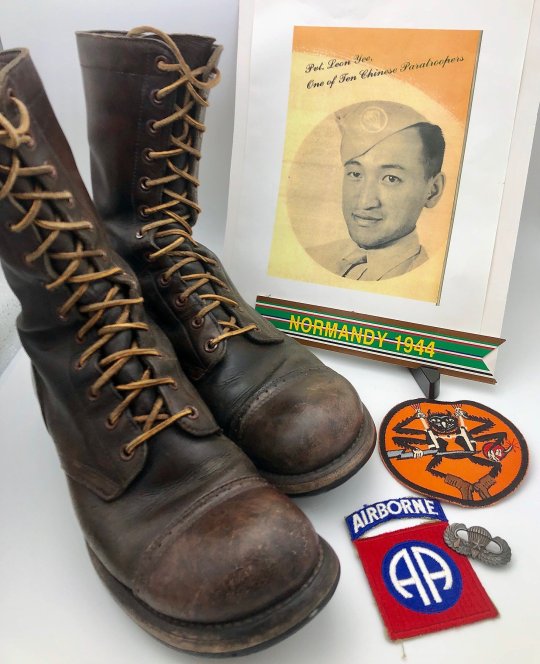
Leon Yee's jump boots, unit patches, and jump wings (from the collection of his nephew and documentarian, Montgomery Hom). The boots were designed initially in 1941 by William P. Yarborough, a test officer in the 501st Parachute Infantry Battalion/Provisional Parachute Group. They are also known as "Corcorans," after the J. F. Corcoran Shoe Company, one of their manufacturers.
At approximately 0200 on June 6, and as part of the then-largest airborne operation in human history, Yee hurled out of his plane, weighed down by more than 100 pounds of equipment, As he descended, he saw sporadic gunfire and small fires on the ground. He landed in a cow pasture northwest of the Merderet River, disoriented in the pitch-black night. under the cover of darkness. German anti-aircraft fire illuminated the sky, hitting some of the aircraft.
After landing without mishap and shedding his parachute harness, Yee took cover in a nearby ditch. He had no idea of his location, as his regiment had experienced the worst drop pattern of all the American airborne units, with only 20% of the paratroopers landing in their designated zones. Hours later, by 4 a.m., a helmetless sergeant from another company of the 82nd Airborne Division joined him. Together, they sat quietly in the ditch until dawn, trying to determine their location. They discovered they were north of their intended drop zone.
By daylight, Yee had joined other regrouped paratroopers regrouped to plant explosives to destroy enemy communication lines, and engage in firefights as elements the 82nd advanced over the next few days toward their main objective, about 5 miles from Utah Beach -- the marshes of the Merderet and Douve. The marshes formed a natural defensive line protecting the western end of the Allied amphibious landing zone. However, the flooded marshes also limited the Allies' potential to break out of the beachhead. They had been flooded to further impede movement. Allied planners deemed control of the bridges at Manoir de la Fière and Chef-du-Pont as vital.
Yee's ad hoc unit reached the La Fière area, and over the next five days attempted to seize causeways and bridges over the Merderet at La Fière and Chef-du-Pont and, further, destroy the highway bridge over the Douve River at Pont l'Abbé (now Étienville). The lightly-armed troops of the 82nd faced counterattacking Wehrmacht units supported by Panzer III and French tanks captured four years earlier.
Yee would see intense combat for five days. During an attack on a German machinegun position, he was severely wounded. A burst of gunfire had struck rocks in front of him, and a ricocheting fragment hit his right temple, just below his helmet. Bleeding profusely from his wound, he lost consciousness. Yee awoke on a cot in a landing craft headed back to England.
Paratrooper Kenneth Gong
On the eve of D-Day Kenneth Gong, a native Chinese American from the town of Cleveland in the Mississippi Delta, performed the first of his two combat jumps, with the 101st Airborne Division.
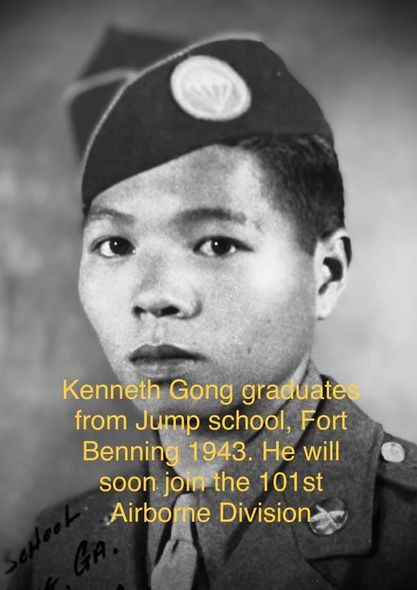
Sgt. Kenneth Gong of the 101st Airborne Division was a native of Cleveland, Mississippi.
Kenny Gong had earned the nickname “Machine Gun Gong” for his proficiency in firing the M3 submachine gun.
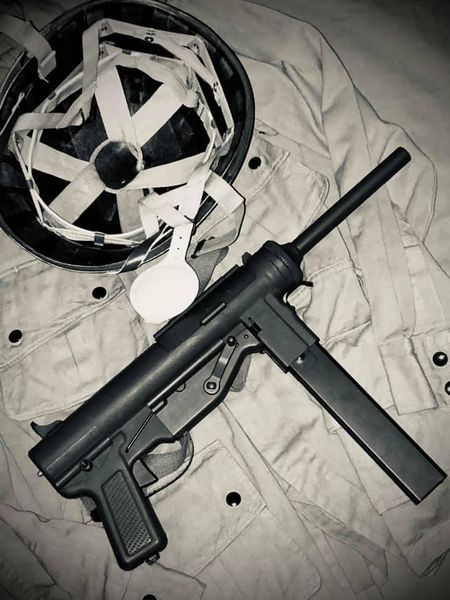
The M3 is an American-made, .45-caliber submachine gun adopted by the U.S. Army in late 1942, as the "United States Submachine Gun, Cal. .45, M3." The M3 was chambered for the same .45 ACP round fired by the Thompson submachine gun, but was cheaper to mass produce and lighter, at the expense of accuracy. Troops commonly referred to the firearm as the "Grease Gun" or "the Greaser" owing to its visual similarity to the mechanic's tool. The weapon is often attributed as the source of the WW II slang used by American soldiers in referring to enemy troops killed by this weapon, who were referred to as having been "greased."
T-4 Sergeant Gong was assigned to the headquarters command, 3rd battalion, 501st Parachute Infantry Regiment, 101st Airborne Division. He saw combat in Normandy and Holland.
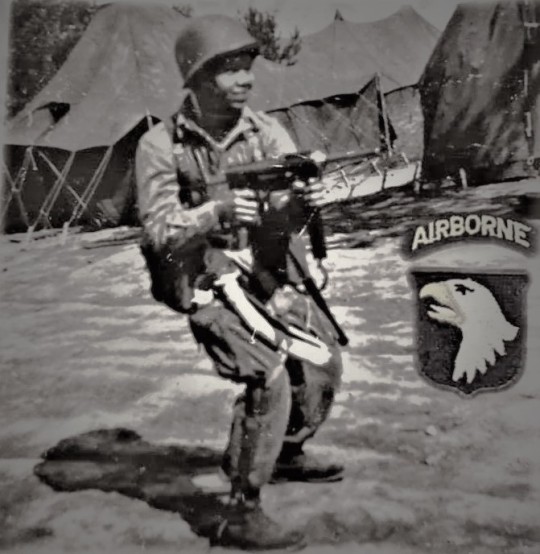
Sgt. Kenneth Gong of the 101st Airborne Division brandishing the M3 submachine gun, his handling of which would earn him respect from his comrades.
When US president Bill Clinton proclaimed October 26, 1998, Chinese Veterans of World War II Day, longtime Delta resident Kenny Gong was one of the White House honorees. His division’s motto remains “Rendezvous With Destiny.”
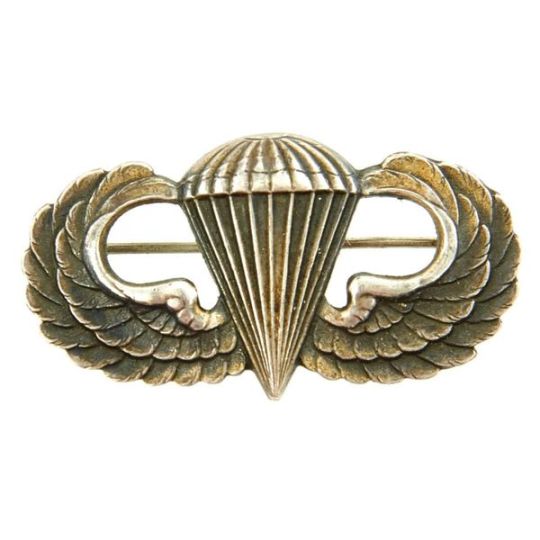
The Parachutist Badge, also commonly referred to as "Jump Wings," is a military badge of the United States Armed Forces. Some services, such as the Marine Corps, officially refer to it as an insignia instead of a badge. The original Army Parachutist Badge was designed in 1941 by Captain (later Lieutenant General) William P. Yarborough and approved by the Department of War in March of that year. The Parachutist Badge replaced the "Parachutist Patch" which had previously been worn as a large patch on the side of a paratrooper's garrison cap. (LTG Yarborough also designed the Senior and Master Parachutist Badges and the addition of stars to portray the number of combat jumps.) The airborne background trimming that is worn behind the badge of those assigned to airborne units is also a contribution of Yarborough.
On this 80th anniversary of the airborne landings in Normandy, let us honor not only the approximately 10 Chinese Americans who served with paratroop and glider units in the European Theater of Operations but all who answered the call to fight for their country during an era of exclusion and segregation.
They also served.
---------------------------------
To read more about Chinese America's warfighters of that era from California, Montgomery Hom's book Fighting on all Fronts - Profiles of WWII Chinese Americans from the Golden State may be purchased here.
#Chinese American airborne troopers#Kenneth Gong#101st Airborne Division#Wesley Ko#82nd Airborne#Leon Yee#Montgomery Hom
3 notes
·
View notes
Text
Gonna be one of these nights I see...
2 notes
·
View notes
Text

Pictured above: Brig. Gen. Anthony C. Mcauliffe, commander of the 101st Airborne Division, gives his various glider pilots last-minute instructions in England before the take-off on September 17, 1944 for Operation market Garden.
Today marks the 80th anniversary of Operation Market Garden. Its objective was to create a 64 mile salient into German territory with a bridgehead over the Nederrijn (Lower Rhine River), creating an Allied invasion route into northern Germany.
In the end, Market Garden was one of the costliest Allied failures of WWII, but remains a remarkable feat of arms. This is not because of its strategic ambition, but because of the determination and courage shown by Allied airborne troops and the units that tried to reach them.
It did however, lead to the liberation of a large part of the Netherlands at a time when many Dutch people were close to starvation.
(Photo courtesy of U.S. Air Force archives)
#operation market garden#market garden#wwii#world war 2#us army#101st airborne#paratroopers#82nd airborne#british army#british airborne#military#history#holland
95 notes
·
View notes
Text
The WWII nerd in me wants to know what airborne division the cat is part of

5K notes
·
View notes
Text

The Force is powerful in my family.
My grandfather had it, my father also had it and I have it too.
Happy Veteran's Day
0 notes
Text
82nd Airborne Chorus Full Performance | America's Got Talent 2023 Auditi...
youtube
1 note
·
View note
Text

82nd Airborne, flying over France June 6th 1944
1 note
·
View note